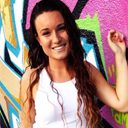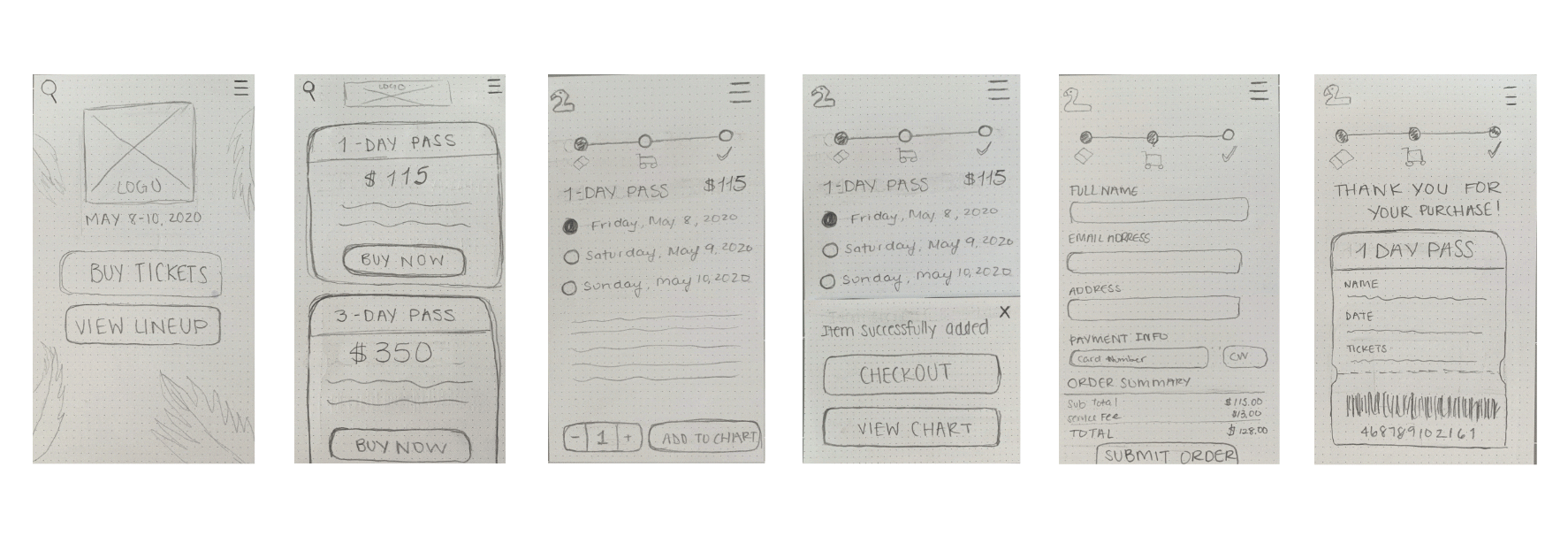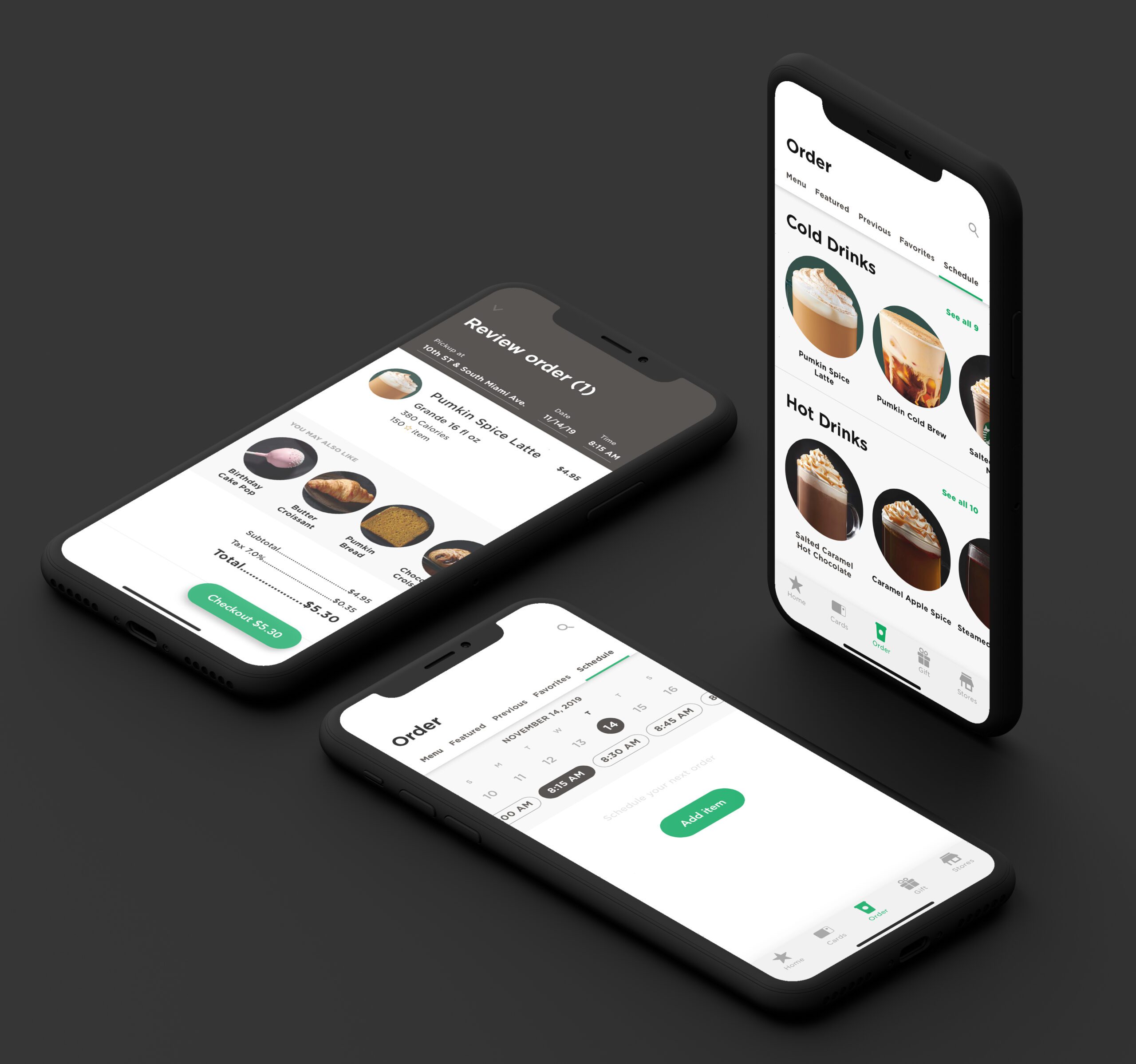01. Brief / Overview
Since the 90s, event culture has been rising tremendously. Festivals, conferences, releases, exhibitions, and fairs have transformed into a new shape that changes every year. Communication is a key factor of their success. The strategy has to be aligned and deliver a cohesive message and experience. Nowadays an event’s digital presence is as important as the event itself — it represents longer lasting testimonial of what happened during those days.
Simplicity is the ultimate sophistication. Even if the topic is as simple as buying tickets for a music festival where we always want to guide our users with a successful path. In a 4-day sprint, as a group of two, my partner and I were challenged with designing a ready-to-build microsite for an event of our choice that will take place next year. Living in Miami, it was no surprise that we chose to focus on music festivals. If any of my readers ever attended one well guess what…you’re one of the lucky 32 million music lovers who attend a festival at least once a year.
02. Business Analysis
There’re currently 800 music festivals in the United States alone. By conducting a S.W.O.T. analysis, we identified that there’s an opportunity to create a unique event not currently offered in Florida. We got inspiration from the early days of Coachella when their main focus was featuring trendy artists that are not necessarily top charters. Additionally, Flamingo Music Festival would have a laid-back experience with a hint of Florida tropical vides.
We started with focusing on the business analysis to get a better understanding of our current competition and where they stand in the music festival industry. We defined the landscape with festivals which are held locally and globally, such as Ultra Music Festival, Electric Daisy Carnival (EDC), Okeechobee Music & Art Festival, Coachella, and Tomorrowland. Applying a competitive feature analysis framework, we discovered that all of these festivals were ranging around 3–4 days and hosting a specific theme each year. However, the local festivals that occur in Florida only offer electronic music genre and do not offer flexible ticket options. Going through Market Positioning practice, we identified gaps in the market, which helped us position our “blue ocean” for Flamingo Music Festival towards offering alternative music, currently not being offered in the state of Florida, and providing affordable admission tickets for attendees.
03. User Research
Kicking off our primary research by sending out surveys & conducting 6 Guerrilla-Style user interviews, focusing on things people did before, during, and after the music festival to identify commonalities in quantitative and qualitative data. Below are some of the quotes that really stood out to us:
“I really don't like buying 3-day passes so many weeks in advance and later having to commit to it.”

“Big ass ticket! I don’t want to worry about carrying it all day long & losing my ticket.”

“Buying tickets is a major headache. Planning phase is always the most stressful part!”

04. User Persona
All of the research we gathered helped us with the creation of our user persona, Party Parker, so we can better understand the mental model of our users and empathize with them. By breaking down our users’ steps using the Journey Map, we were able to find opportunities to better understand the tasks Parker needs to accomplish to buy his tickets online for a music festival.

05. Ideation
The analysis and synthesis of the information was a critical next step to inform the ongoing design. Ideas were correlated and cluster together, patterns were identified, then pulled out and ideated upon further. This process began formed the rough draft of a viable conversation ecosystem. A mind mapping exercise helped move this process along & provide a framework for visualizing the system at a high-level approach.
Focusing all of the data on the main pains and gains to establish a base foundation to improve users experience both before and during the festival. Using a MoSCoW method, I narrowed down functionalities feature and defined next steps and what to focus on during the UI process.
Flamingo Music Festival is a microsite that allows users to:
- Browse with easy, simplified navigation
- Buy 1 Day Pass
- Have an easy checkout following a process bar
- Have a digital ticket for the event
Before creating wireframes, we optimized the ideal user flow which guided Party Parker’s steps. This practice helped us to visualize the structure of the microsite’s taxonomy.

06. Sketches & Visual UI Design
Wireframes and paper prototypes were created, then tested with users in order to determine which of the high-level approaches were the most functional, easy to understand, and impactful to potential users. This process was repeated through multiple design iterations to quickly validate or eliminate design approaches. Using the sketches, we tested the flow and terminology to make sure it was as concise and usable as possible. After testing and iterating, users seamlessly were able to locate the DA 1-Day Pass and seemingly purchase the ticket using the easy checkout.

Laid-back, fun, young, positive & fresh are the 5 pillars of our brand attributes that best describe Flamingo Music Festival. A set of visual styles for the core components within the interface was developed to integrate the look and feel we intended to capture. A moodboard to move past the original concept and begin visually defining the brand. Testing the moodboard in a focus group setting of 20 people yielded positive results. This guided us on the correct path in visually representing the feeling and emotion that are connected with the music festival.

07. Mobile Experience
The prototype demonstrates the previously mentioned user flow. Initially, we began the process by creating an atomic design inventory that helped us speed up the process, keeping the design integrity and minimizing error by having pre-set building blocks. Later we introduced micro interactions to delight the user; and create a moment of engagement with the user and the product, at the end of the day it is a music festival and we want our users to enjoy using our microsite. The prototype demonstrates a user looking for a GA 1-Day Pass, purchasing it using easy checkout and receiving a digitized formed ticket.
08. Key Learnings & Takeaways
Creating a microsite may not always be a simple solution. Only the research can show the goals and frustrations of the users in order to know what direction to take the site in. Further testing of the high fidelity prototype is necessary to determine if further adjustments will be needed. If our hypothesis holds true, then we would like to expand our tests with our initial mood board next to the high-fidelity design to understand and confirm feelings of a broader audience. The data collected for this project highlighted multiple additional issues that can be addressed in the future, such as, fixing product packages and allowing users to select hotels, food vendors, etc.









